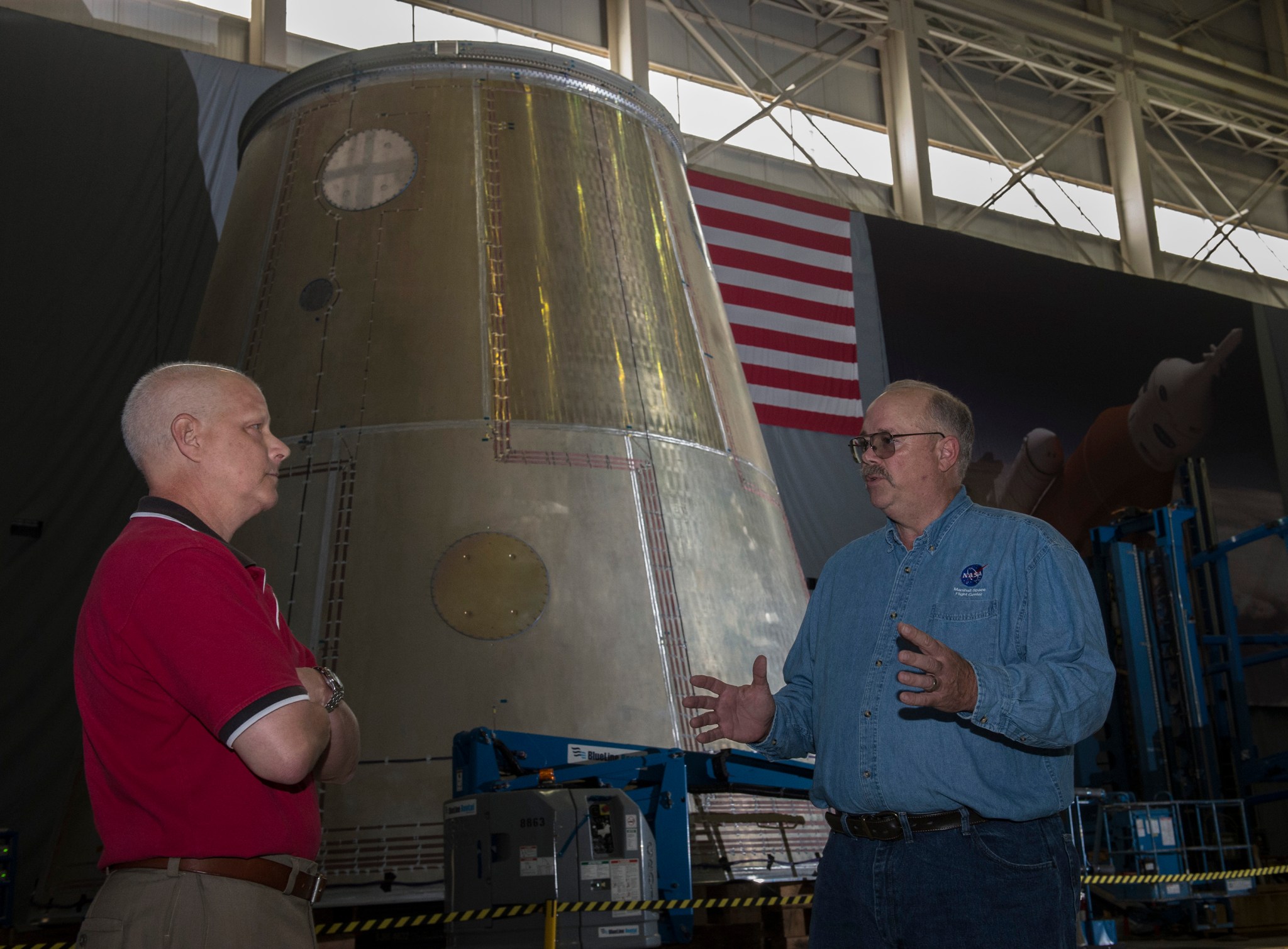Rick Burt remembers his very first engineering and safety lessons came as a child, one of two sons working on the family’s small farm near Columbia, Tennessee, in the 1960s. His dad was a strict teacher on the importance of listening to and watching out for each other, of thinking ahead to recognize potential dangers before tackling any job, especially around the tractor and other machinery.
Formal engineering classes and decades of experience came later. But his dad’s farm curriculum still resonates every single day with Burt, who is now director of Safety and Mission Assurance at NASA’s Marshall Space Flight Center in Huntsville, Alabama.

“It does stick with me. When you think about the safety aspects of anything you do, it molds all your thought processes,” he said. “That feeds right in to everything we do in the space program, and particularly our development of the Space Launch System: You identify the hazards, determine how to mitigate those hazards and reduce the amount of risk.”
Burt was previously chief safety and mission assurance officer for SLS, the massive rocket that will take humans on exploration missions farther into deep space than ever before, and a journey to Mars. In his new assignment he is responsible for safety, reliability and quality engineering for the programs and activities across the entire Marshall Center.
“Risk is inherent in exploration. So we continually reinforce and grow our safety culture as we invent and refine new technologies and approaches to living, working and exploring deeper into space,” Burt said. “My own mission, every day, is to make sure everyone who works here, in every kind of job, whether NASA employee or contractor, thinks about that balance of safety and risk, and feels absolutely comfortable reporting, talking and asking about any safety issues, without worry about consequences.”
Open communication and mutual trust are as critical for mission success at NASA as welding or computing power, he said. Progress is powered by learning from mistakes as well as successes — another lesson learned early on the farm that applies to life as well as engineering.
In high school, Burt exceled at math and science, and by then knew he wanted to be an engineer. He went to Tennessee Technological University in Cookeville because it had one of the best mechanical engineering programs in the country, and received several job offers with his bachelor’s degree in 1978. He chose a position with the Tennessee Valley Authority and began working with teams building the Hartsville Nuclear Power Plant east of Nashville. He met his wife, Susan, who also worked for TVA, riding a commuter van to the plant every day.
Burt transferred to the Watts Barr nuclear plant in Spring City, Tennessee in 1984. In 1987, he was asked to supervise the engineering for modifications at the Browns Ferry Nuclear Plant in Athens, Alabama. When that temporary position became permanent, the Burts moved to Rogersville, Alabama, where they still reside in the home where they raised their daughter and son.
In 1990, when NASA had openings at Marshall in the Space Shuttle Program, he seized the opportunity. NASA was then preparing for the Return to Flight following the space shuttle Challenger accident and Burt was soon engrossed in the work of the shuttle Reusable Solid Rocket Motor Project office.
“I viewed an engineering job at NASA as the pinnacle of the profession, especially as we examined all the hardware and procedures to get the shuttle Discovery ready for safe flight after a two-and-a-half-year period when we weren’t launching crews into space,” Burt said. “It is just so exciting to be part of something so special as human spaceflight. I really wanted to be a part of that.”
His experience includes serving as deputy manager and chief engineer of the motor project office; deputy manager of the Space Shuttle Projects Office; manager of the Ares 1 First Stage Program; and manager of the Marshall Engineering Directorate’s Test Laboratory. He became chief safety officer for the Space Launch System in 2011 and Marshall’s Safety and Mission Assurance director in July 2016.
“It’s an extraordinary feeling to know that you’re being entrusted and empowered to lead such a critical team, both for the center and the agency,” Burt said.
“It’s hard to fathom sometimes, but the journey from where I started to where I am now has been amazing,” he said, smiling. ” We are talking about going to Mars. We’re going places we’ve never been — and we’re getting there with safety principles guiding us every step of the way.”
For more information about NASA’s Marshall Space Flight Center, visit:
Jennifer Stanfield
Marshall Space Flight Center, Huntsville, Alabama
256-544-0034
jennifer.stanfield@nasa.gov

























